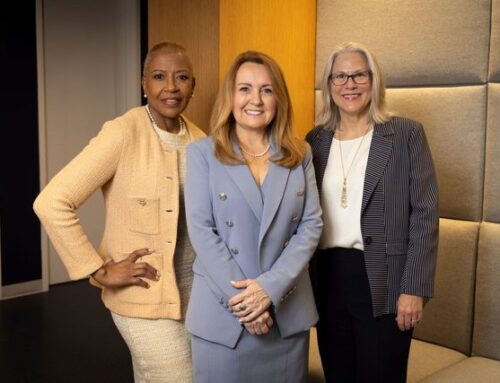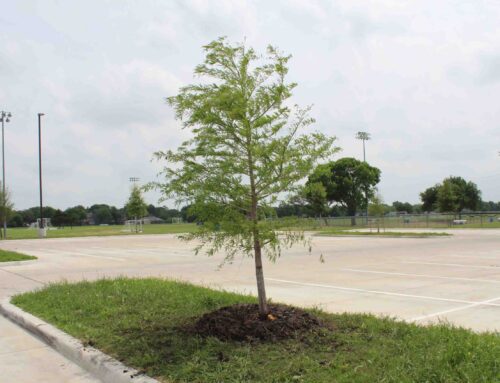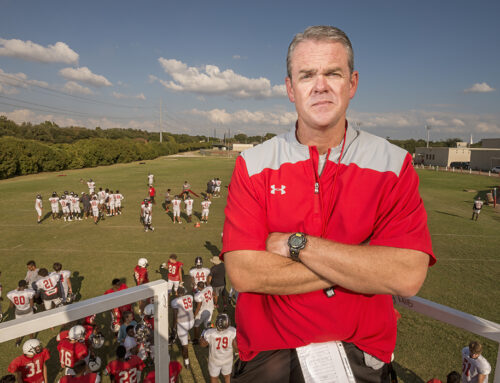Last week, we looked at transfers to and from a neighborhood school. The subject: Northlake Elementary. The issue: Few home-owning families in the attendance area send their children to Northlake, despite its fine academic rating.
Questions surfaced after a group of home-owning parents in the Northlake attendance zone started the “Let’s Back Northlake” movement, a positive initiative geared toward rallying the neighborhood to support its public school.
As I have explained to several concerned readers who responded to the post, it would have been negligent to report on the “Let’s Back Northlake” initiative without at least addressing the obvious question of why Northlake elementary’s student population is 90 percent black and Hispanic and disproportionately composed of apartment-dwelling children, while that is decidedly not the makeup of the whole attendance zone.
It was honestly surprising to me that some of the 1,600-plus readers who have read the post so far expressed anger over our broaching of the topic; you can read their comments, along with all of the other comments we received, here.
The best I can ascertain from the complaints is that some people believe I detracted from the mission of “Let’s Back Northlake” by bringing up the issue of racial and socioeconomic separation in some Richardson ISD schools. I noted that transfers, which can sometimes be used to enable said separation, are initiated by parents and approved by two principals and the school district, so these are just statistics, not a way to place blame.
I’ve offered the founders of “Let’s Back Northlake” ample opportunity to be quoted in the post. (Did the Advocate even bother to talk to you ladies for their story? was a popular question/accusation on the social network. Ok, I’ll bite). Specifically, I called Amy Timmerman, one of three founders. She called me back and left a message. I called her back and left a message, and two weeks later I hadn’t heard from her, so instead of a verbal interview, I used her words in a mass email from her about the group and its purpose. We also had a podcast-interview scheduled with the group founders but following our blog post, they canceled.
The invitation for them to join us is still open, should they change their minds. (Update: We are working on a podcast date and time; stay tuned.) We’re simply trying to discuss issues important to the neighborhood, not stir up trouble or point fingers.
Now, the good part. Aside from the small uproar, the post started the much-needed conversation regarding what is happening at the school that I had hoped for. I appreciate the honest response I received from some readers. Here are some excerpts from what we received, both online and offline.
For example: One note comes from Jimmy Jones, a Lake Highlands resident for 17 years who sent his daughter to Northlake in the ’90s, his son to Hamilton Park a few years later and a granddaughter to private school in 2011, all while living in the Northlake attendance zone. “Major issues at Northlake are as follows and haven’t changed from 1994 to 2011, in my experience,” he writes.
“Extremely high turnover in apartments leads directly to similar turnover in classrooms. No continuity results in a high percentage of kids underperforming for their respective grade, which forces teachers to teach to the lowest common denominator. This leaves most medium-to-high performing kids not being challenged or educated to reasonable levels. While race/ethnicity appears to be an issue, it is only because they tend to be the apartment hoppers. Our Hamilton Park experience (note: Hamilton Park is in a historically black neighborhood, but has a relatively balanced racial mix) proved stable homeowner kids of any race can keep up with a more challenging course load.”
He continues, “Local administration never appeared to care about getting back the homeowner kids, even as late as 2011, because the classrooms were already full and they, Northlake, were getting their maximum state funding. Please note that this is not supposition on my part; my wife was told this by the Northlake principal.”
Note: The Northlake principal responded to a similar statement, assuring us that she welcomes the students from home-owning families and is eager to work with parents and groups such as “Let’s Back Northlake”.
On our blog, Kelly responded with her Northlake experience:
“My children are of mixed race (black/white) and attended Northlake when we moved to the area last year. It was quite surprising to learn how segregated the schools were in RISD, but I prefer my children to be in a culturally diverse environment so they can feel welcome, but it was the behavior from the other children that initiated our transfer request … (read Kelly’s entire comment here, under ‘comments’). My kids loved school and had attended DISD schools previously, but were very upset about going to Northlake — being teased by other students for being good, witnessing acts and vulgarities that shouldn’t be happening in elementary schools anywhere … It really isn’t about race, but about the environment there. I thought the teachers were great but didn’t like what it was doing to my kids. We were only there for four months.”
Kelly continues, “My suggestion: distribute the apartment kids among the varying schools. It’s overwhelming to move to the area and be placed in an inner-city school environment for any child, no matter what the race. We transferred to Wallace due to their even mix of diversity and great student and parent culture.”
Another Lake Highlands resident of 33 years, Roy Underwood, shares this experience in an effort to offer insight regarding transfers in and out of the school:
“Four of my five children attended Northlake and all attended Lake Highlands Jr. High and all attended and graduated from Lake Highlands High.
“In 1979 Northlake had a large and vibrant scouting and PTA program. Parents regularly dropped by for lunch with their kids as did local USPS employees. All paid for or took their lunches and there were no before or after programs. Initially my kids walked to school. My last child was one of two white kids in an all black class. Most of the kids were on free lunch. Ours were not. PTA was disappearing. My wife was one of two moms volunteering and helping out. She also had a full-time job.
“Other families used the few [parents who volunteered] for rides and all kinds of other things. We were paying high taxes and making dollar contributions to supplement parents that had no interest in school ownership … ”
He adds, “People want to be around people that look and act like them. Not so much color but dress, language, behavior, values, and shared organizations like church or fraternal or civic (ex: Knights of Columbus, Exchange Club, Elks).”
Which brings us to the poll: Here’s how a couple hundred readers responded when asked, How comfortable would you be sending your child to a school where he or she is a decided minority, in terms of race, of the student population?
So now that some of us are talking about the issue, which one commenter called “the elephant in the middle of the room”, what can be done about it?
Do the attendance zones, as they are drawn, create schools that are socioeconomically and racially balanced? RISD spokesman Tim Clark told us last week that, “RISD boundaries are set up to embrace the neighborhood school concept.” That means lines are drawn to encourage people who live closest to the school to attend said school. With the close proximity of low-income apartments and affluent residences in Lake Highlands, that should lead to a healthy mix.
If it’s a matter of creating schools with environments that are satisfying, or at least acceptable, to families within the attendance zones — giving every school the resources and tools every students needs — how do we do that?
Efforts such as “Let’s Back Northlake” are a step in the right direction. They see the big picture and have a goal most everyone wants: better schools for all families, better-prepared students from all demographics, happier homeowners, better property values, less commuting, less expense, less hassle. Progress cannot be made if we never address obvious problems and issues.
An effort like “Let’s Back Northlake” cannot thrive if its leaders put up walls when the subject of race or socioeconomics arise. If we fear and avoid honest conversation, the status quo will prevail.
We will continue to ask questions, address the concerns from commenters, garner information and explore the school district’s transfer policy and its effect on education and the community.






